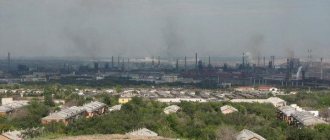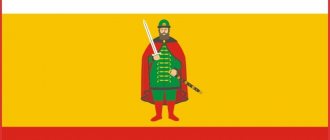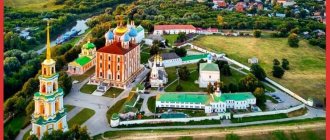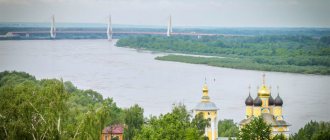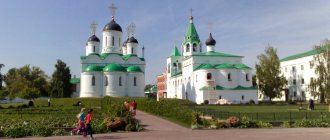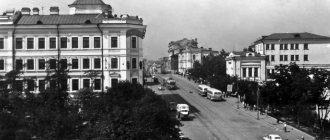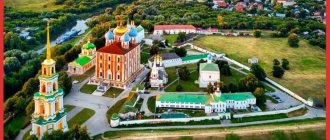The birthplace of Ivan Susanin and the poet Demyan Bedny, the abode of the Snow Maiden and the future Tsar, all this is Kostroma. The ancient Russian city and river port on the Volga is fraught with a rich history and a sea of attractions associated with it. After all, it is here that you can admire religious shrines, the beauty of wooden architecture, objects made of birch bark and listen to the piercing sound of Peter’s toys.
What holiday is it today?
09 February 2022, Wednesday
Today are holidays and events: Aeroflot's birthday International Dentist Day Memorable date in Russian military history: The feat of the cruiser Varyag Tomorrow: Diplomat's Day
Today is an Orthodox holiday: Transfer of the relics of St. John Chrysostom, Archbishop of Constantinople... Tomorrow: St. Ephraim the Syrian. Venerable Ephraim of Novotorzhsky. Venerable Ephraim of Pechersk, Bishop of Pereyaslavl. Venerable Theodosius of Totem, the head and founder of the Spasosumorin monastery...
Today is a national holiday: Chrysostom's Fire... Tomorrow: Ephraim's Day...
Seasons
Seasons, four periods of the year (spring, summer, autumn and winter) characterized by certain average temperatures. The period during which the Sun passes through one of these sectors is called the season. Spring in the Northern Hemisphere and autumn in the Southern Hemisphere begin when the Sun passes through the initial circle of declination and its right ascension is 0° (vernal equinox). Summer in the Northern Hemisphere and winter in the Southern Hemisphere occur when the sun's right ascension is 90° (summer solstice). Autumn in the Northern Hemisphere and spring in the Southern Hemisphere begin when the sun's right ascension is 180° (autumnal equinox). The beginning of winter in the Northern Hemisphere and summer in the Southern Hemisphere is considered to be the winter solstice, when the direct ascension of the Sun is 270°... Next: Seasons. Russian folk calendar. Monthly words...
Kostroma - regional center
Now you know in which region Kostroma is located, and we tried to briefly talk about the region itself. Next, we can go directly to the story about this beautiful city of Russia. It itself is relatively close to Moscow: only 344 kilometers. And its entire area is 144 km².
The city has an interesting history, and its historical center is always visited by many tourists. Here, for example, such monasteries as Ipatievsky and Epiphany-Anastasiin have been preserved. Kostroma has the status of a historical city officially transferred to it.
Folk calendar about every day
Every day one season always replaces another and this determines a person’s way of life. In connection with this, a folk calendar was formed in which there were practically no nameless, unmarked days. Every day was special, had its own purpose. All this was determined by climate conditions and astrological phenomena.
A calendar is a system for counting periods of time. The first calendars arose a long time ago, in ancient times, because there was a need to measure time. The word calendar comes from the Latin words caleo - to proclaim and calendarium - debt book. This is due to the fact that in Ancient Rome the beginning of each month was especially proclaimed, and because it was customary to pay debts on the first day of the month. Different peoples counted time differently. Some calendars are based on the changing phases of the moon - lunar calendars; in others - the change of seasons - sunny; in others, the length of the year was coordinated with the change of seasons, and the counting of months was associated with the phases of the Moon. Such calendars are called lunisolar.
In Rus', the calendar was called a monthly calendar. Every day, the month book covered the entire year of peasant life, “describing” day by day, month after month, where each day had its own holidays or weekdays, customs and superstitions, traditions and rituals, natural signs and phenomena. The cyclical nature of the calendar is reminiscent of human life, where spring is youth, summer is heyday, autumn is the time of harvesting fruits (it’s good if there are some, otherwise you can live your life without collecting fruits), winter is the time of wisdom and peace. This cyclicality and rhythm determined the way of life of the farmer. The folk calendar was an agricultural calendar, which was reflected in the names of the months, folk signs, rituals and customs. Even the determination of the timing and duration of the seasons is associated with real climatic conditions. Hence the discrepancy between the names of the months in different areas... Next: Folk calendar...
Geographical position
The area where Kostroma is located is located in the central part of Russia, at low latitudes with the same name. The territory is adjacent to five famous regions of the country - Vologda, Ivanovo, Kirov, Nizhny Novgorod and Yaroslavl.
An important water artery of the city is the Volga with its tributary Kostroma. The longest river in Europe divides the settlement into a left-bank and a right-bank part. The terrain is flat, having undergone the Quaternary glaciation of the Dnieper period. Hilly areas give way to ravines and river valleys.
Fishing calendar for every day
The fishing calendar should not be taken as an absolutely indisputable truth. Fish biting is greatly influenced by a whole range of natural factors, as well as the influence on the nature of man himself. You must not forget that the fish’s bite depends and is determined not only by the calendar dates and biological cycles of their life, reflected in the calendar, but also, no less, by the state of their habitat; the bite also depends on weather conditions: air and water temperatures, cloudiness, wind direction and strength, etc... Next: Fishing calendar...
Tourist opportunities
The pearl of the route “Golden Ring of Russia” will give tourists and guests an amazing opportunity to experience the charm of the Russian soul and the beauty of the ancient city. Kostroma's tourism opportunities are so diverse and rich that not every Russian city can surpass them. Tourists are attracted not only by the monuments of architecture, architecture and nature of the region where the city of Kostroma is located. The cultural life of the modern city, its national characteristics and Russian character are of great interest.
Orthodox calendar about every day
Orthodox calendar: Orthodox, Church and Christian holidays.
The church year is an alternation of weekdays and holidays. On weekdays, a person is called to work “by the sweat of his brow to earn his bread.” Holidays are given in order to feel liberation, to rise above the bustle and routine of the world, to feel involved in the highest of worlds, “where there are no illnesses, sorrows and sighs, but endless life.” Since ancient times, holiday cycles have been associated with the seasons. The pagans associated them with the worship of the forces of nature, the cult of which in the Old Testament was replaced by gratitude to the Creator for the universe. And although the connection between holidays and the seasons has not completely lost its power, since God is present in everything, in the plant and animal world, in human works, it nevertheless faded into the background, giving way to a spiritual foundation built on the Sacred Scriptures. The history of Orthodox holidays dates back to the times of the Old Testament. Each of the Orthodox holidays is dedicated to the remembrance of the most important events in the life of Jesus Christ and the Mother of God, as well as the memory of saints... Next: Orthodox calendar...
Administrative-territorial structure
Kostroma in Russia, according to the administrative-territorial structure, is a city of regional significance, or the administrative center of the region. It is also worth noting an interesting fact that it has the status of an urban district, which includes only one settlement.
Now let's look at the administrative division of the city. Since 2011, its territorial division into three districts came into force: Center, Zavolzhsky and Fabrichny. Each of them had independent management departments. However, in 2013, a reform was introduced, according to which the territorial bodies of the city administration located in the city districts were abolished. But, despite some changes in the administrative-territorial structure, the division into districts in Kostroma has been preserved.
Russian folk calendar for every day
The word “sign” comes from the word “notice”, i.e. observe. As a result of observing what happens around a person every day, he accumulates life experience. This knowledge was passed down from generation to generation, carefully preserved and people trusted it as a sacred book. Many signs have come to us from the depths of centuries without losing their knowledge. Each of us is free to choose: to dismiss all this as an absurd superstition or to take a closer look at the signs and take the centuries-old experience of generations more seriously. Most of us, when taking exams, ask them to scold them, boasting about some kind of good fortune or luck, spit so as not to jinx them or knock on wood, take a detour if a black cat crossed the road, are afraid of the number 13 and much more. And who among us does not have lucky things, numbers? Who has never resorted to the help of fate at least once in their life, who has not believed in secrets? It’s as if everything connected with signs is hidden somewhere deep in our subconscious. Often we remember them mechanically, unconsciously, or just as a joke. But, undoubtedly, the signs contain a lot of accurate knowledge and practical wisdom of our ancestors. They cover all the characteristic, often difficult to perceive, natural phenomena. Signs have preserved a lot of what was in old folk holidays and customs; they help predict the weather, grow crops... Next: Folk signs...
Holiday calendar, dates and events of the year
All state and professional holidays in Russia, including significant World and International holidays, and other equally interesting holidays and events about every day.
The holiday has always kept pace with the history of mankind. Social time can be divided into three types: everyday life (weekdays), weekends and holidays. Everyday life is a series of practices repeated day after day and every day (work). Weekends are regular breaks from the rush of everyday life. It is believed that on weekends a person should restore his strength after working days. Day off, non-working day. A holiday is a day of celebration established in honor or in memory of someone or something. A day or series of days celebrated by the church in memory of a religious event or saint... Next: Calendar...
One of the subjects of the country
In the Russian Federation, the Kostroma region is part of the Central Federal District of the country. The area of the region is 60,211 square kilometers. Its territory is home to a population of 648,157 people, as of 2022.
Thus, in terms of the number of living citizens among all subjects of Russia, the region is in 67th place. And it is worth noting that this is not the lowest figure. In this regard, one can argue that this region will gradually become more famous among the citizens of the country, and the question of what region Kostroma is located in will come up less and less often.
Prayer book, Orthodox prayers for every day
Prayer is the most powerful means for healing all illnesses - both physical and mental. Prayers can be laudatory or grateful, petitionary and repentant. If we have offended God, sinned, we must ask Him for forgiveness, that is, repent. Such prayers are called repentant prayers. If everything is fine with us, if we and our loved ones are healthy and prosperous, if we have a place to live, something to wear, something to eat, we must glorify and thank God for this. Such prayers are called praise or thanksgiving. If some misfortune, illness, trouble or need happens, you need to ask God for help. Such prayers are called petitionary... Next: Orthodox prayers...
Zodiac, astrological, eastern calendar. Zodiac signs
In ancient times, to establish the calendar, priests used knowledge of the positions of all the planets. Before the reform of Peter 1, the New Year was celebrated on the Day of the Autumn Equinox. On this day, according to ancient legend, the most peaceful treaty was concluded between the Great Race (ancient Slavs) and the Great Dragon (ancient Chinese) and it was approximately 7518 years ago... For the ancient Slavs, the calendar month corresponded to the lunar cycle from new moon to new moon, taking into account such Thus, the relationship of the entire annual cycle with astronomical and natural phenomena. There was no coherent calendar system. The main natural phenomena are still considered to this day to be the days of the solar equinox and solstice - the Slavic holidays Maslenitsa, Kupala, Ovsen and Kolyada. But during the time of Peter 1, all ancient Slavic calendars were abolished and a new Western European calendar from the Nativity of Christ (Julian calendar) was introduced, while the beginning of the calendar was moved to January 1. The Julian calendar (old style) did not take leap days into account and accumulated one extra day every 128 years. After the October Revolution in 1918, the Gregorian calendar (new style) was introduced in Russia, according to which an amendment of 13 days was introduced. The calendar of the ancient Slavs was based on two planets: the Sun and the Moon. And now they don’t use anything at all. The calendar has become static. There is no such thing as the calendar, it turns out, resting on some planet. Nobody even knows about it. There are just some standard numbers, there are months and holidays. The calendar is based on the Sun and Moon. Why is this so? Because these two luminaries influence the Earth. The Earth revolves around the Sun, and the Moon revolves around the Earth. And these two luminaries create the atmosphere on the planet. From here the calendar is built... Next: Astrological calendar...
Attractions
The pearl of the city, its heart and calling card is the Ipatiev Monastery. For more than 300 years, the white-stone beauty has been storing the historical treasures of the Russian people. Among them are a unique wall painting by Kostroma icon painter Gury Nikitin, an ancient library with the Ipatiev Chronicle, and a gilded five-tiered iconostasis. Here on March 23, 1613, the election of Mikhail Romanov to the throne took place. It was the Kostroma monastery that became the cradle of the royal dynasty, and the Romanov revival began from its walls. Historical buildings have been preserved on the territory of the attraction - the Trinity Church, the chambers of the boyars, the cells of the monks, the holy gates, towers and buildings.
Where is Kostroma located, in what region of our vast Motherland can you still see so many churches that played an important role in the life of the locality? It is here, in the Volga region, that every piece of land is imbued with faith, history and love. God-protected and majestic - this is how the ancient city appears before tourists.
Among the modern attractions, tourists can visit the Flax and Birch Bark Museum. The halls display all types of work with plant material - from straw to shirts, from bark to baskets and bast shoes.
Dream books online, interpretation of dreams
A dream book is nothing more than an interpreter of dreams and dreams, a translator of dreams. Since ancient times, people have been using dream books; dreams have always been given great importance, and people have often noticed the prophetic properties of some dreams. The dream book can become your faithful assistant every day and throughout your life, thanks to the dream interpreter you can always make the right decisions, the dream book will help you resist temptations in time, and will warn you against wrong steps and frivolous actions. Further…
Historical reference
The famous Volga city owes its existence to the son of Vladimir Monomakh - Prince Yuri Dolgoruky. The first mention of the settlement dates back to 1152. The Volga region lands were settled for the purpose of strategic strength and strengthening the princely possessions. The city and the area where Kostroma is located achieved its greatest prosperity during the reign of Vasily Yaroslavovich in the middle of the 13th century. The youngest son of Yaroslav Vsevolodovich declared the city the capital of his possessions, and a year later of all lands between the Volga and Oka.
Vasily made a huge contribution to the construction of religious shrines in the city. Under him, the Zaprudnensky Monastery, the Church of the Resurrection, and the Assumption Cathedral were founded. Expanding the territory of the Grand Duchy of Moscow, the stronghold city serves as an important defense against attacks by the Tatar army.
During the XII-XV centuries, a special place was given to the construction of defensive fortifications in the form of monasteries. Among such memorialized fortifications on the territory where Kostroma is located, the Ipatiev and Nikolo-Babaevsky monasteries stand out.
Kostroma had to go through difficult times when it was captured by Polish invaders. Only thanks to the people's militias of Minin and Pozharsky, the ancient city became Russian again.
At the end of the 18th century, Kostroma became a provincial city and a leader in the production of linen products - fabrics, oil and seeds.
Today, the settlement with a population of 277 thousand people is a major center of the textile and woodworking industries. The city of Kostroma, where the largest number of creative unions and organizations is located, has become the heart of folk festivals of folk art in Russia. It was in this ancient settlement that the history, traditions, rituals, clothing and crafts on which the great state developed and was built were preserved.




